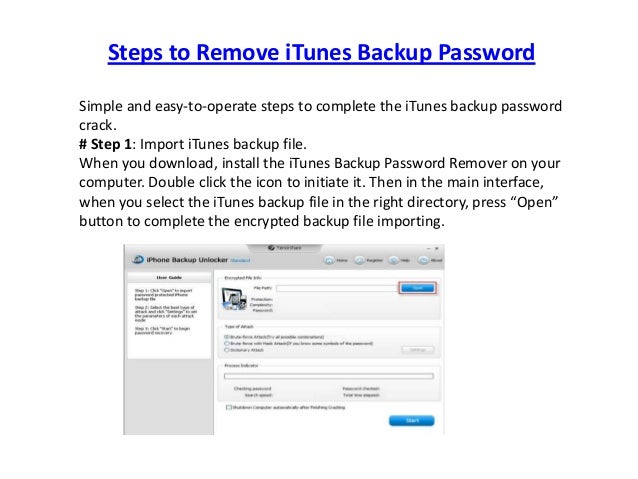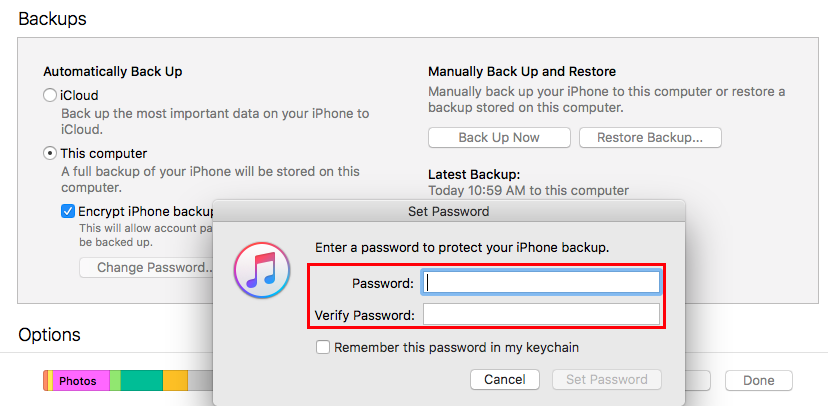

Remember, for iOS 13 backup encryption is needed if you want to collect the most data from the device. If you do not encrypt the backup on iOS 13, you will not be able to collect Call logs, Safari artifacts, Apple Maps, Health, Wallet, and Keychain. If the user set the iTunes encryption for the iOS device, this method will not work to remove that passcode.

#Itunes iphone backup password password
When you select Disable iTunes encryption password it will only work when Cellebrite UFED or Cellebrite Physical Analyzer assigned the iTunes backup password when the examiner checked the box. The feature built into Cellebrite UFED to Disable iTunes encryption password is designed to remove the “1234” that could be left behind by Cellebrite Physical Analyzer or Cellebrite UFED during a failed collection. Can “disable iTunes encryption password” in the Cellebrite UFED settings under device tools remove the user-created iTunes password? Should that occur, follow the steps shown in the next Q&A. Just as we saw in Cellebrite Physical Analyzer, you will be prompted to check the box and enable a temporary password to collect the encrypted backup.Ĭellebrite Physical Analyzer will not prompt for the iTunes password unless something went wrong during the collection process. If the device has not been encrypted with iTunes, the screenshot below will be shown. If the backup currently has an iTunes backup password associated with it, the screenshot below will be shown. If Cellebrite UFED is used to perform the collection on the iOS device, similar messages will be conveyed. Something worth noting is that all iOS backup collections should be encrypted (not just iOS 13), as we can collect much more when encryption is enabled. Cellebrite Physical Analyzer will not prompt you to check the box because it’s not needed. This means that the device currently has an iTunes encryption password tied to the device. If the device was previously encrypted by its user, the screenshot below will be shown. Checking this box ensures that the most amount of data is collected from the iOS device. The next screen (Figure 2.) will prompt you to check the box to enable temporary backup encryption. This is where you, the examiner, must make the right choice. In Figure 1., Cellebrite Physical Analyzer is alerting us that the backup is not encrypted.

Below, you can see a few screenshots from Cellebrite Physical Analyzer below. It does not matter who, or what enables encryption. Just to be clear, the backup must be encrypted to collect the most information from any iOS 13 device. Does iOS 13 require the user to encrypt their backup? The questions are listed below with a brief description to clarify any confusion. To best answer them and make sure we’re all on the same page, I decided to write this short blog post. Several of you reached out with similar questions after watching our webinar titled “ Fact or Fiction: What do you really know about iOS 13?”.


 0 kommentar(er)
0 kommentar(er)
